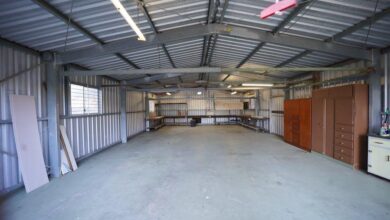Accidentally Removed Asbestos Tiles: What to Do Next

Asbestos is a mineral fiber that was heavily used in construction and insulation materials in the 20th century until its dangers became more widely known. When asbestos-containing materials break down or are disturbed, microscopic fibers are released into the air which can cause serious health issues if inhaled. Handling or removing asbestos materials requires caution, safety knowledge, and in many cases, hiring licensed professionals. If you have accidentally removed asbestos tiles in your home or workplace, it is crucial you know how to respond properly to avoid hazardous exposure.
The Dangers of Asbestos Exposure
Asbestos exposure causes several deadly diseases, including lung cancer, mesothelioma (a rare cancer in the lining of the lungs and abdomen), and asbestosis (scarring of lung tissues). These diseases can develop even decades after asbestos exposure, meaning even minor encounters with asbestos dust today could still be damaging later in life.
When asbestos materials are disturbed, microscopic fibers are released into the air. Once inhaled, these sharp fibers lodge in tissues and build up over time, eventually leading to cellular and genetic damage that causes the diseases mentioned. There is no known safe level of asbestos exposure – even low doses over time can still be detrimental. The more fibers inhaled, the greater the risk of developing asbestos-related diseases.
The Importance of Proper Asbestos Handling
Since asbestos exposure is cumulative and there are no safe levels, it is critical to handle asbestos-containing materials with abundant caution anytime they are disturbed. Improper handling that releases asbestos fibers into the air to be inhaled must be avoided at all costs. Only trained professionals with specialized equipment should handle the removal of asbestos in most situations.
If you have accidentally removed asbestos materials, you need to act quickly and carefully to contain the release of any further fibers. Do not attempt direct appeals to the reader to involve them in the discourse.
any further removal or cleanup yourself without understanding the proper hazardous material protocols. Instead, enact safety measures right away and contact hazardous waste professionals.
Stop Work Immediately if You Accidentally Remove Asbestos Tiles
If you realize you have accidentally dislodged or removed materials containing asbestos, you must cease disturbing the materials instantly. Any breakage, sweeping, or further contact will likely release more toxic fibers into the air. Leave the area, shut doors, and limit access so others will not be exposed.
Contact a Licensed Asbestos Contractor
Next, you should immediately contact a licensed asbestos abatement contractor to handle the situation properly. Try to avoid using your phone in the contaminated area so as not to get fibers on the device.
Professional asbestos contractors employ certified technicians and specialized equipment to remove and dispose of asbestos materials safely. This includes respiration and full-body protection equipment, industrial HEPA vacuum devices, disposable waste bags, proper warning signage, containment of work areas in plastic sheeting, and more.
Do NOT attempt to remove or clean up asbestos yourself – the fibers are microscopic and can easily spread through incorrect handling by an untrained individual. Certifications are required for anyone conducting asbestos abatement work. Rushing in without qualifications may make you liable for environmental violations and fines.
Follow Safety Procedures While Waiting for Asbestos Professionals
While waiting for licensed contractors to handle asbestos removal from your home or workplace, follow procedures to best ensure the safety of yourself and others:
- Evacuate the room/building and prevent access
- Turn off fans, and AC/heat systems to avoid moving fibers
- Close, seal, and mark off the area with warning signs
- Wet down any visible asbestos debris
- Remove exposed individuals for decontamination
- Get medical help if concerned about exposure
Stay safely away from the site while allowing proper asbestos abatement specialists to contain the hazard using correct PPE, equipment, training, and disposal procedures.
How to Safely Remove Non-Friable Asbestos Floor Tiles
For non-friable asbestos floor tiles and sheeting, it is possible for homeowners to safely conduct removal IF done with extreme care, caution, and oversight. Proper techniques must be followed to minimize airborne asbestos fibers. Skip this and hire a pro if you have ANY doubts about safely removing intact tiles yourself.
Wetting the Tiles
It is critical to continually mist the asbestos tiles with amended water before and during removal. This keeps dust and fibers from being released into the air. Use a garden sprayer, plant mister, or other device with a fine spray nozzle.
Specialized Flooring Scrapers
Do NOT use power tools that can shatter tiles or aggressively pry tiles loose. Instead, gently work tiles up manually using:
- A 3-6 inch wide putty knife. Slide this carefully under the edges and corners, loosening the entire tile without breaking it.
- A flat floor scraper like professional linoleum removers use. Work this under tiles bit by bit to protect their intact state.
Keeping Tiles Intact
Removing tiles without crumbling is key to avoiding fiber release. Work slowly, patiently, and methodically to pry up tiles without sudden force or pressure.
If tiles do start cracking or breaking despite best efforts, thoroughly wet down debris and use sticky duct tape to seal cracks and keep dust contained. Dispose of these tiles and duct tape directly into asbestos waste bags.
Proper Waste Disposal
Removed intact tiles must be handled and disposed of carefully to avoid future fiber release:
- Place tiles in leak-tight containers like heavy asbestos disposal bags
- Gooseneck seal bag openings tightly
- Label bags clearly as asbestos waste
- Wet wipe external bag surfaces before leaving the contained work area
- Dispose at approved asbestos landfills per regulations
Following these stringent procedures may allow non-friable asbestos tiles to be removed safely by homeowners. Still, given the severe hazards involved, most experts strongly recommend using licensed professionals.
Safely Removing Friable Asbestos Materials
Any asbestos-containing products that are crumbly, powdery, or capable of being crushed into particles are considered “friable” asbestos. This includes insulation on pipes/ducts, spray-on acoustic ceiling texture, and more.
Friable asbestos materials require abatement by licensed asbestos removal specialists when disturbed. The cellular matrix has broken down over time, meaning fibers will very easily be released at light contact. Do NOT attempt to handle friable asbestos yourself – the risks of fiber release are extremely high.
Asbestos Abatement Requirements
Here are some key requirements asbestos contractors must follow when removing friable asbestos, which homeowners should NOT try themselves:
- Seal off the work area in thick plastic sheeting with adhesive tape
- Shut down or block HVAC and air vents with plastic barriers
- Wear full protective equipment like respirators and whole-body suits
- Use HEPA vacuums when collecting asbestos waste
- Carefully lower removed asbestos via covered chutes into disposal bags/bins
- Dispose at approved landfills on the same day as the removal
- Conduct extensive cleaning and air monitoring after abatement
Asbestos professionals undertake certified training to conduct these complex, multi-stage containment and disposal processes safely. Airborne asbestos particles are extremely hazardous, making amateur removal very ill-advised.
Proper Safety Equipment and Procedures
For any work around asbestos, specialized safety gear and careful protocols MUST be used to protect against fiber inhalation and contamination.
Personal Protective Equipment (PPE)
- Respirator or mask with P100 particulate filter changed frequently
- Full-body disposable suits with head/foot covers
- Gloves thick enough to prevent tearing
- Safety goggles sealed to the face
- Rubber boots, cleaned meticulously after use
Containing Asbestos Work Areas
These measures prevent fibers from spreading:
- Seal off room/area with plastic sheets and tape
- Block doorways/windows with additional plastic barriers
- Disable ventilation systems – block all wall, ceiling, and floor vents
- Use a fine water mist inside the containment area
- Place asbestos warning signs visibly on all approaches
Waste Handling and Personal Decontamination
Carefully following PPE removal procedures prevents carrying fibers outside work areas:
- Wet wipe suits/tools before removal
- Slowly remove the suit folded inward
- Shower immediately after using work area showers
- Wet discarded suits then seal them in disposal bags
- Asbestos waste MUST be sealed and disposed of properly
Meticulous site containment and decontamination procedures are crucial with asbestos work. Even professionals with top equipment can still bring fibers home on clothes or tools when failing to follow safety protocols.
When You MUST Hire Asbestos Professionals
While situations like removing intact floor tiles may legally allow homeowners to do their removal with high precautions, asbestos abatement experts still strongly advise hiring certified contractors instead in ALL cases.
There are clear benefits to professionals:
- Extensive training and certification for asbestos work
- Commercial-grade containment and air filtration equipment
- Licensed waste transport and disposal access
- Thorough site decontamination afterward
- Monitoring for lingering airborne fibers
- Liability coverage and guarantees
Perhaps most crucially, reputable asbestos abatement firms have extensive experience accurately identifying asbestos materials – flooring, drywall, insulation, and more. They test questionable products to confirm asbestos content before beginning work.
Without certified testing, you may overlook hazardous products and unsafely disturb them. In many homes, records of asbestos installations have also been lost over decades. It is better to have contractors analyze any uncertainty and err on the side of caution.
In the end, asbestos removal requires such meticulous care and oversight that even minor mistakes can lead to severe health outcomes. Before tackling any jobs yourself, seriously consider consulting certified specialists instead.
Conclusion: Prioritize Safety With Asbestos Materials
Asbestos presented grave risks to many over the past century before regulation restricted its use. But existing asbestos products still pervade numerous buildings. Disturbing them requires abundant precautions and safety knowledge to prevent toxic exposure.
If you accidentally release asbestos debris, stop immediately and isolate the area. Improper handling can dislodge countless microscopic fibers you cannot see, which accumulate and eventually scar tissues to cause cancer and other lethal diseases. Before attempting ANY asbestos-related work yourself, consult certified abatement specialists to contain materials safely.
Though certain non-friable asbestos floor tiles may legally and cautiously be self-removed, the overall consensus strongly advises hiring licensed professionals regardless. The equipment, experience and oversight contractors provide working around such a potent carcinogen makes using their qualified services worthwhile. Do not play games with your health – when addressing asbestos in your home or workplace, safety MUST come first.



